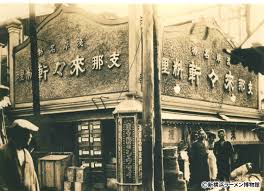
1. Introduction
Few dishes can stir as much passion, comfort, and cultural pride as ramen. It is a dish that spans the humble and the haute, the dorm room and the Michelin-starred table. Ramen is not just food—it’s a story in a bowl, a steaming blend of history, artistry, and obsession. From Tokyo alleyways to international food festivals, ramen’s reach is global, but its heart is deeply Japanese. This article dives into the 7000-year-old mystery, mastery, and madness surrounding one of the most iconic dishes in modern cuisine.
2. Mysterious Origins
The origin of ramen is as tangled as its noodles. While many associate ramen with Japan, its roots are arguably Chinese. In the late 19th century, during Japan’s Meiji Restoration—a time of rapid modernization and Western influence—Chinese immigrants introduced wheat-based noodles to the port city of Yokohama. Early versions of ramen were called “Shina soba” (Chinese soba), distinguishing them from traditional Japanese soba made of buckwheat.
The real turning point came in the post-World War II era. Japan, devastated and hungry, saw an influx of cheap American wheat through foreign aid. Black markets flourished, and among the chaos, street vendors began serving affordable bowls of wheat noodles in soy sauce-flavored broth topped with vegetables and slices of pork. Thus, modern ramen was born—out of hardship, necessity, and innovation.
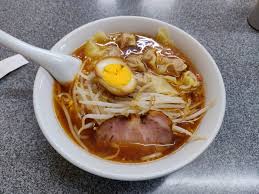
3. The Evolution of a National Icon
As Japan rebuilt itself, ramen evolved from a black-market staple to a cultural cornerstone. By the 1950s, specialized ramen shops (ramen-ya) began to appear. Each region put its own spin on the dish:
- Sapporo in Hokkaido became known for its rich miso ramen, often topped with sweetcorn, butter, and seafood.
- Hakata in Fukuoka developed the ultra-creamy tonkotsu broth, made by boiling pork bones for hours until they dissolve into a savory white soup.
- Tokyo favored shoyu (soy sauce) ramen with slightly curly noodles and a clear, brown broth.
- Kitakata used thick, flat noodles in a light, shio (salt) broth.
These regional styles weren’t just culinary variations—they were statements of identity, pride, and innovation. Ramen chefs became local celebrities, some even revered like rockstars.
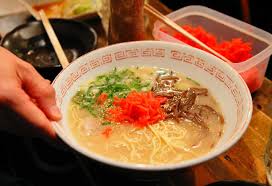
4. The Spiritual and Cultural Significance
In Japan, ramen isn’t fast food. It’s soul food. Each bowl is crafted with precision, patience, and purpose. The concept of kodawari—the relentless pursuit of perfection—is embedded in ramen culture. Every component, from the elasticity of the noodles to the umami depth of the broth, is fine-tuned to near madness.
Ramen is also woven into the fabric of daily life. It’s the 2AM choice for exhausted salarymen, the after-school treat for children, the quiet comfort for solitary souls. It reflects the Japanese value of harmony (wa)—the way toppings balance with noodles and broth, each enhancing the other without overpowering.
Some ramen shops even demand silence during meals, encouraging patrons to focus entirely on flavor. Others play jazz or classical music as part of a sensory experience. In many ways, eating ramen in Japan is closer to a meditative ritual than a meal.
5. Famous Ramen Masters and Their Legends
Among the pantheon of ramen legends, few names echo as loudly as Kazuo Yamagishi, the late master who invented tsukemen (dipping noodles). His tiny Tokyo shop, Taishoken, became a mecca. Fans waited for hours to experience his genius—a harmony of chewy cold noodles dipped into a hot, complex broth. Yamagishi’s story was so compelling that it became the subject of the documentary The God of Ramen.
Another legendary figure is Shigemi Kawahara, the founder of Ippudo, who took Hakata tonkotsu ramen global without sacrificing quality. Known as the “Ramen King,” Kawahara won the TV show TV Champion Ramen Chef three times in a row and earned a Guinness World Record for the largest number of ramen bowls served in 24 hours.
These masters don’t just cook—they inspire. Many of their apprentices have gone on to open shops around the world, keeping the spirit (and secrets) of their mentors alive.
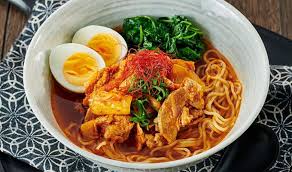
6. Failed Attempts and Imitations
Despite its popularity, replicating authentic ramen outside Japan has proven difficult. Many Western chains misunderstand the balance required to make ramen sing. Overuse of garlic, poor noodle texture, bland broths—these missteps lead to disappointment for those seeking the real thing.
Fast food chains have tried, and failed, to create scalable ramen. Instant noodles, although revolutionary (thanks to Momofuku Ando’s 1958 invention of Cup Noodles), are a different species altogether. True ramen is labor-intensive, requiring hours—or even days—of preparation.
Some chefs have admitted defeat. A New York chef once confessed in an interview, “I could make five-star foie gras with my eyes closed, but ramen broke me. It’s relentless.”
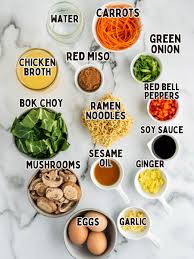
7. Rivalries and Secret Recipes
Ramen chefs are notoriously secretive. Recipes are often guarded like family heirlooms. Apprentice chefs may spend years cleaning kitchens before they’re allowed near the pot.
This secrecy breeds rivalries. Tales of spies infiltrating kitchens, apprentices defecting with stolen recipes, and family feuds abound in ramen circles. In one famous case, two Tokyo shops across the street from each other—once mentor and apprentice—refuse to acknowledge each other’s existence after a fallout over broth preparation.
Many ramen-ya don’t allow photography, not just out of etiquette, but to protect the presentation and technique from being copied. It’s not just about flavor—it’s about legacy.
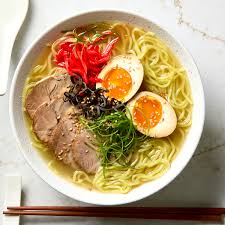
8. Global Explosion
In the past two decades, ramen has exploded globally. Chefs like David Chang (of Momofuku fame) and Ivan Orkin (a Jewish-American who opened a wildly successful ramen shop in Tokyo before conquering New York) have brought credibility and innovation to the dish abroad.
Ramen festivals draw thousands. Ramen shops have popped up in Paris, London, São Paulo, and Sydney. Instagram is flooded with photos of intricate bowls. Even Michelin has taken notice—bestowing stars upon ramen restaurants like Nakiryu and Tsuta in Tokyo.
Yet, with global fame comes challenges. Some argue that ramen is losing its soul—morphed into a trendy food with truffle oils and edible gold. Others defend its evolution as a natural expansion of a living tradition.
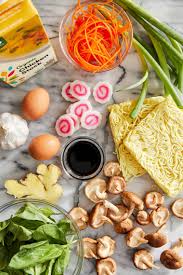
9. Ramen Competitions and High-Stakes Battles
Ramen competitions are a serious matter in Japan. The Tokyo Ramen Show, held annually, brings together top chefs from across the country to showcase their best bowls. Attendees vote on their favorites, and bragging rights are immense.
Another key event is the Ramen Grand Prix, where chefs compete in categories like broth, innovation, and presentation. The pressure is high, and the judging is brutal.
Some chefs push the limits, infusing broths with rare ingredients, experimenting with molecular gastronomy, or even using AI to analyze flavor profiles. But at the core, the winners are those who understand and respect the soul of ramen.
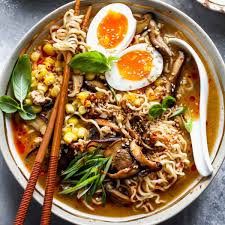
10. Recipes From the Masters (and Original Twists)
Here are six classic and creative ramen recipes for true aficionados:
Traditional Tonkotsu Ramen
Ingredients: pork bones, garlic, ginger, scallions, soy sauce, mirin, ramen noodles, chashu pork, soft-boiled egg.
Cook pork bones for 12 hours until creamy. Strain and season broth. Add noodles and toppings.
Shoyu Ramen with a Twist
Ingredients: chicken stock, soy sauce, sake, bonito flakes, garlic oil.
Enhance with grilled shiitake mushrooms and yuzu zest for a unique kick.
Miso Butter Corn Ramen (Sapporo-style)
Ingredients: chicken stock, miso paste, butter, corn, bean sprouts, ground pork.
Rich, sweet, and creamy—classic Hokkaido.
Vegan Spicy Sesame Ramen
Ingredients: vegetable broth, tahini, chili oil, garlic, soy milk, tofu, bok choy.
Creamy and fiery without any animal products.
Tsukemen Dipping Noodles
Ingredients: thick noodles, fish-pork hybrid broth, scallions, nori.
Noodles are dipped into a concentrated broth served separately.
Black Garlic Oil Ramen
Ingredients: tonkotsu base, homemade black garlic oil, chashu, kikurage mushrooms.
Umami-packed and dramatic.
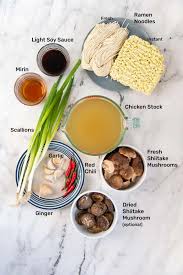
11. Ramen Etiquette and Traditions
Slurping is not only acceptable—it’s encouraged. It shows appreciation and enhances flavor. In Japan, there’s no talking on the phone in a ramen shop. You focus, eat, and go.
Many ramen-ya have vending machines at the entrance. You buy a ticket, hand it to the chef, and wait quietly. It’s efficient and respectful.
A proper ramen meal can be finished in ten minutes—but the memory can last forever.
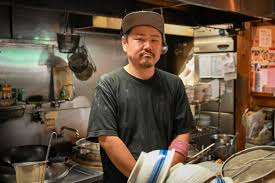
12. The Future of Ramen
What lies ahead for this eternal dish? Food tech companies are developing lab-grown chashu and low-calorie noodles. Nissin is working on space ramen for astronauts. AI is being used to generate new flavor profiles.
But even with all the innovations, the soul of ramen remains unchanged—nourishment made with care, shared with others, refined over time.
13. Conclusion
Ramen is more than noodles in broth. It’s the sum of centuries, cultures, conflicts, and creativity. From the shadows of war-torn cities to the glimmer of global stages, ramen continues to evolve—united by a bowl that welcomes all.
To taste ramen is to taste history, struggle, triumph, and love. And that is why this simple dish will never grow old.
wanna read about culinary and food? Here is a fascinating article on Anthony Burdain https://worldtoday.online/2025/02/08/anthony-bourdain-a-life-of-culinary-exploration-storytelling-and-legacy/
